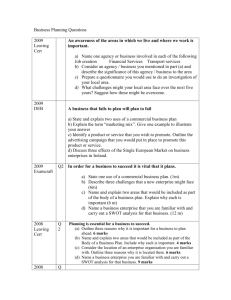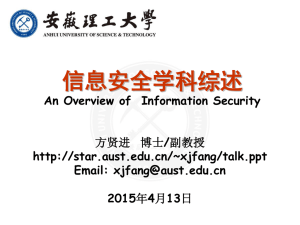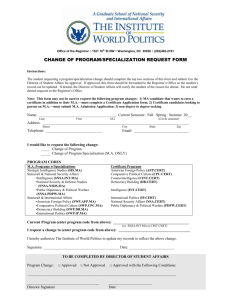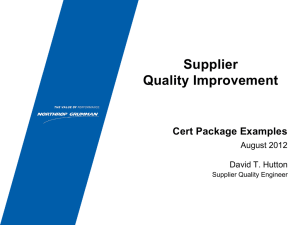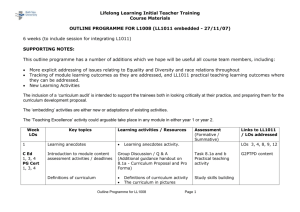Credit-free certificates for new academics - Jo Peat
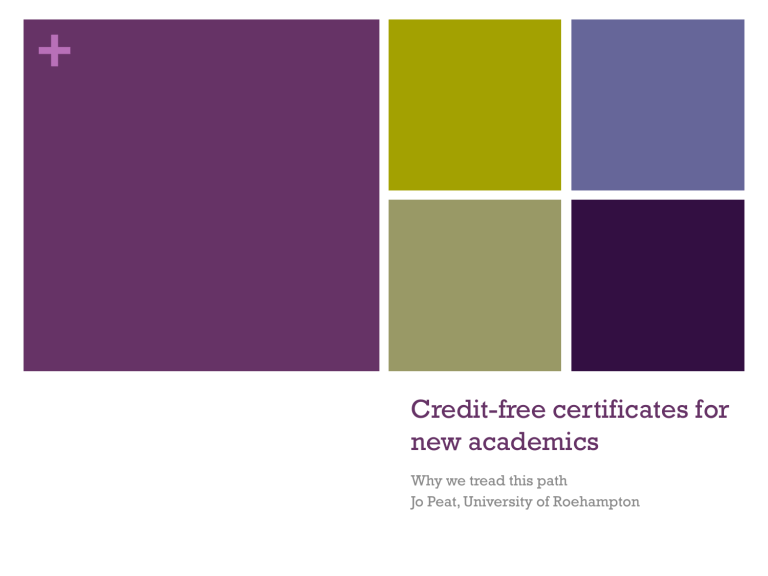
+
Credit-free certificates for new academics
Why we tread this path
Jo Peat, University of Roehampton
+
How did we work with UKPSF and HEA accreditation?
Very early on Roehampton had a framework of provision linked to old UKPSF:
SD1 ‘evidenced’ by successful completion of SEDA Introduction to
Supporting Learning and Teaching and accredited by HEA at
AHEA;
SD2 ‘evidenced’ by successful completion of University of
Roehampton Certificate in Learning and Teaching in HE (UR Cert) and accredited by HEA at FHEA;
A series of workshops linked to the individual route for experienced academics at SD2;
SD3 – provision agreed at this level linked to provision of evidence for a promotion route (L&T), but no-one tried to get recognition at this level under the former system.
+
Background to UR Cert
Stand-alone, one year course for academic staff new to teaching in higher education
Until four years ago the course was a PG Cert and sat in the
School of Education.
Tied to the MA Education and carried 60 M-level credits.
Scrutinised by Education Exam Boards and Education
Programme Boards.
So nothing new there …
+
Four years ago …
UR Cert moved to Learning and Teaching Enhancement Unit
(LTEU) away from academic School;
Became non-credit-bearing, but accredited at Fellowship level by HEA;
As yet, no-one has wanted credits, but course can be APELed, if necessary ;
Participants are happy to have the RU Cert as a stand-alone course, recognised and accredited by HEA and tied to FHEA;
For them, FHEA is more important than M Level credits.
+
Discussion
What do you think of untying the programme from M Level credits?
+
Benefits of ‘owning’ the UR Cert
We can alter aspects of the UR Cert to fit with developments in the field without going through all the University quality control structures;
We establish our own deadlines, rather than these being determined by University structures;
We have greater flexibility with the design of the course;
No longer a tension between jumping through MA academic expectation hoops and deep reflection/commitment to professional development we require.
+
Benefits 2
Participants don’t have to have their work scrutinised by other, more experienced colleagues, which can be disconcerting;
We hold our own exam boards, with an external advisor, to suit our time frames not those established by taught degree courses;
We operate on a pass/fail basis, so marking the work is more straightforward.
+
What about GTAs and other colleagues who may teach?
Wouldn’t colleagues in academic-related posts/graduate teaching assistants like/benefit from M Level credits?
The UR Cert is designed specifically for those who have a substantial teaching load.
Other colleagues are offered a short course, which is accredited by both SEDA and at AHEA level.
Very different focus from UR Cert, which is much more around the scholarship of learning and teaching in HE; Intro to
Supporting Learning and Teaching in HE is much more practically focussed.
+
How is the programme structured?
As you would probably expect …
The programme is structured around two modules, each aligned to a number of learning outcomes.
The first module is the taught component of the UR Cert, which runs from September to April and the teaching observations and is assessed by portfolio; the second is a small-scale action research investigation, which will run concurrently, but will be largely based on independent work.
All finished work is due for submission in early September of the following year, although there are interim pieces of work and deadlines built into the course.
+
Student observations
We have also built in observations by student consultants.
The student is paired with a member of staff, has a preobservation meeting to discuss what the person being observed would like feedback on and to establish how the observation will take place, the observation itself and then a post-observation meeting.
The student consultant is always on a different programme of study, so will never be taught by the academic whom they are observing.
This has worked very well so far and both students and academics say how much they have got out of the process.
+
Assessment
Assessment changed two years ago.
Still portfolio and small, action-research project but:
Portfolio broken down into self-contained pieces of work:
Virtual reading group; group annotated bibliography and individual E-poster; evaluation of module; review of own professional practice; critique of observation of peer.
Since this new structure, deferrals down from 47% to 0!
+
What are the essential requirements to make this programme work?
Tie in with HR processes – induction, probation and appraisal
Make it compulsory for all new staff
Get buy-in from managers and keep them involved in the process
Role of external
Keep raising profile of programme in Departments with champions, especially former participants
Need culture of expectation, high standards, commitment and relevance for the programme to be successful and all HR boxes need to be ticked!
New imperative at Roehampton for colleagues to have at least
FHEA.
+
Comments from External
“The standards attained by the students whose work I read were high – at least as high as those on the two other courses
I work with at the moment (one a specialist college, the other a Russell Group institution) and in some cases higher. They have taken a scholarly approach to their work and some of it was excellent. Even the work which the team signalled might be at or near the borderline was, in my view, well over it in the right direction.”
+

